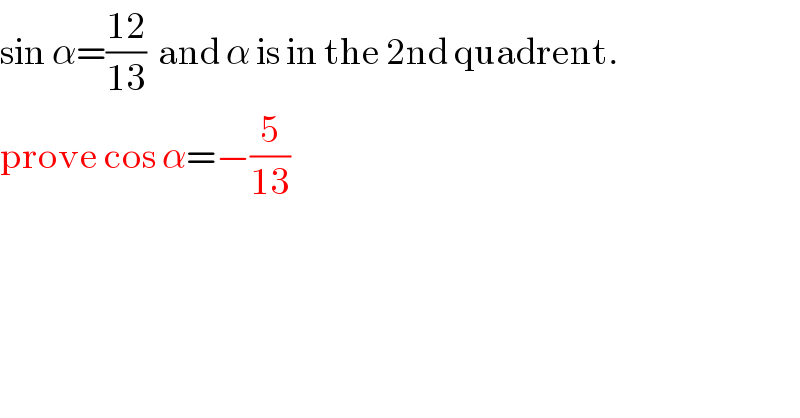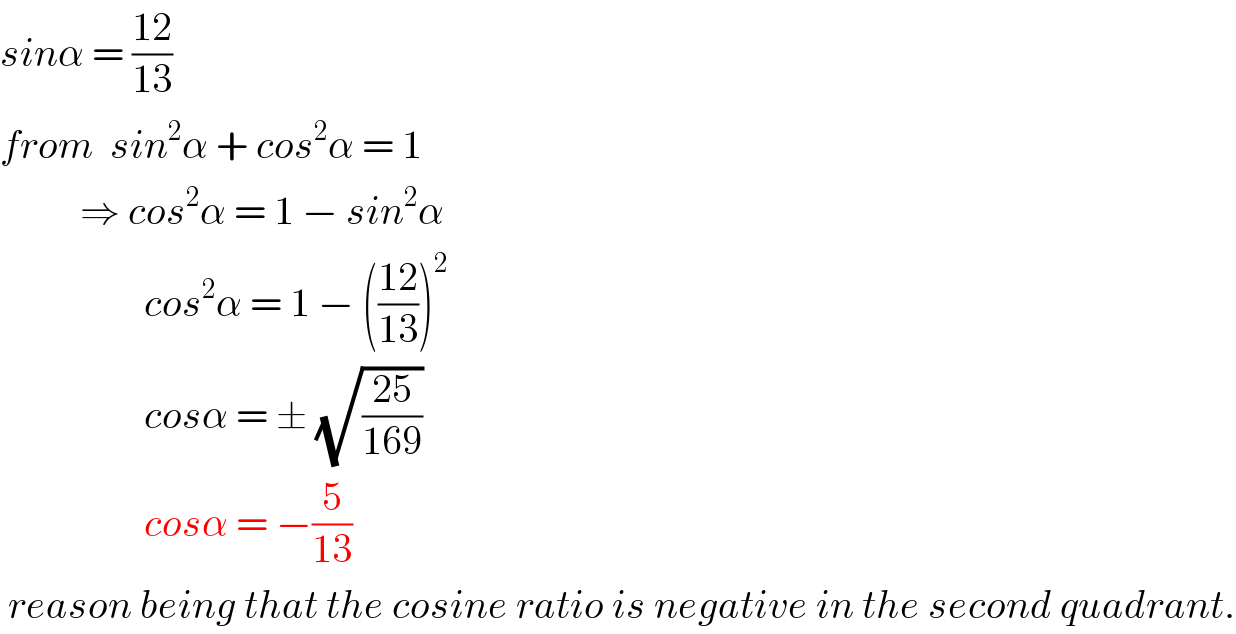
Question and Answers Forum
Question Number 71146 by sadimuhmud 136 last updated on 12/Oct/19

Commented by Rio Michael last updated on 12/Oct/19

Answered by Kunal12588 last updated on 12/Oct/19
![sin α = ((12)/(13)) using identity :− sin^2 θ + cos^2 θ=1 ⇒cos α = −((√(13^2 −12^2 ))/(13)) [∵ (π/2)<α≤π] ⇒cos α = −((√(169−144))/(13))=−((√(25))/(13))=−(5/(13))](Q71166.png)
| ||
Question and Answers Forum | ||
Question Number 71146 by sadimuhmud 136 last updated on 12/Oct/19 | ||
 | ||
Commented by Rio Michael last updated on 12/Oct/19 | ||
 | ||
Answered by Kunal12588 last updated on 12/Oct/19 | ||
![sin α = ((12)/(13)) using identity :− sin^2 θ + cos^2 θ=1 ⇒cos α = −((√(13^2 −12^2 ))/(13)) [∵ (π/2)<α≤π] ⇒cos α = −((√(169−144))/(13))=−((√(25))/(13))=−(5/(13))](Q71166.png) | ||
| ||